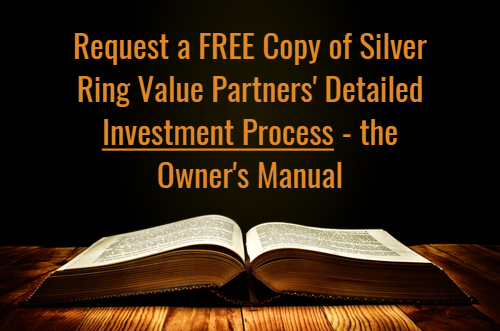How Tax-Efficient Is Your Investing?
/For a taxable investor, the pre-tax rate of return is not the whole story. The tax efficiency of how that pre-tax return was generated will have a large impact on the after-tax rate of return and the ultimate wealth of the investor. Long-term investing naturally results in very tax-efficient returns. The same pre-tax rate of return over 30 years achieved in the most tax efficient way could result in you having more than 2.5 times more than you would have had if your returns had been completely tax-inefficient.
Long-term investors get to keep more of the money they make
In my last article, How and Why to Be a Long-Term Investor, I discussed a number of benefits of being a long-term investor. In this article I explore one of those benefits – the superior after-tax rate of return that long-term investors can obtain as compared with those who invest with a short-term time horizon. While everyone’s individual circumstances will likely vary, calculations throughout the article will assume current tax rules and a high net worth individual in the top marginal tax-rate bracket. 1 I will also assume the same 10% annual pre-tax rate of return throughout the article in order to keep the numbers simple (although such a rate would actually be quite challenging to achieve on a long-term basis from the current starting point). As you will see, the benefits of having a multi-year holding period are quite substantial for those patient enough to adopt a long-term investing approach.
The different levels of tax-efficient investing
Consider the following hypothetical investors:
- Short-Term Trader – this investor holds securities for less than a year and generates all of the returns through short-term capital gains.
- Typical Active Mutual Fund – this investor holds securities for about a year. The returns are a mix of dividends, short-term capital gains and long-term capital gains. I assume that 70% of the returns are realized long-term gains, 20% are dividends and 10% are short-term gains, which is likely slightly more favorable than the actual breakdown.
- Long-Term Active Investor – this investor holds securities for 3 to 5 years. The returns are a mix of dividends, long-term capital gains and unrealized gains.
- Passive Index Fund – the passive index fund has an average holding period of approximately 20 years. The returns are a mix of dividends, long-term capital gains and unrealized gains.
- Perfectly Tax-efficient Investor – This investor invests once and compounds at the pre-tax rate of return, with no dividends or gains of any kind before the end of the period.
It should not surprise you that there is a big difference between a short-term trader whose returns all come from short-term gains taxed at the marginal income tax rate, and a typical active mutual fund that generates its returns from a combination of short-term gains and the lower-taxed long-term capital gains and dividends. However, some of you might be surprised that there is another ~1% difference between the typical mutual fund and the long-term investor. That difference is not trivial – over 30 years it could mean a difference of an extra $300,000 from an initial investment of $100,000. Furthermore, the difference between a typical active mutual fund and a passive index using these assumptions is ~1.3% per year, which could mean a difference in wealth of over $380,000 over 30 years when compared to a typical active mutual fund. That could mean years of retirement for some!
Why is there such a big additional tax advantage from having a longer holding period? By deferring capital gains, you get to earn returns on your deferred taxes. You get to compound these deferred taxes for free, which you cannot do if you have to pay the tax after a realized gain every year. In a way, think of this as a free loan from the government. In this example, the typical active mutual fund would have to generate pre-tax returns of 11.5% per year, 1.5% higher than the long-term investor, in order to achieve the same after-tax result. That is no easy feat.
Assess the investment process, not just the results
The meaningful potential difference in after-tax returns between long-term and short-term investing is one of the many reasons that you should assess the process behind the investment results and not just compare the results themselves. There are many ways that the same return can be generated, and not all of them are equal. Long-term investing has a number of benefits, and one of them is that you get to keep more of your money through being more tax-efficient.
If you are interested in learning more about the investment process at Silver Ring Value Partners, you can request an Owner’s Manual here.
Endnotes
- Short-term profits are those achieved on capital gains resulting from a holding period of one year or less and are subject to the regular income tax rate
- The marginal income tax rate used for all calculations is 48.2%. This rate includes the current top-bracket Federal rate, State taxes of 5.1%, FICA taxes of 2.35%, and the Pease Amendment Surtax of 1.2%. This tax rate will vary based on the state of residence, income levels, and future changes to the tax code, but I believe it to be representative for current illustrative purposes
- Dividends and long-term capital gains (those resulting from a holding period of over a year) are taxed at a rate of 23.8%



